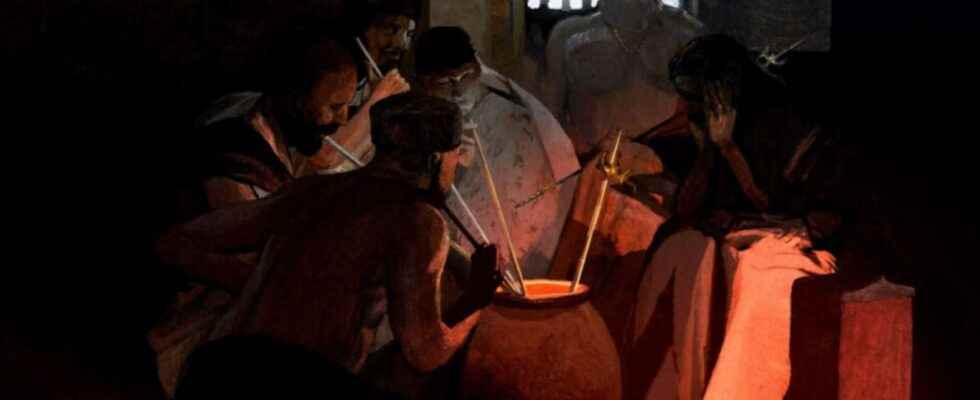The function of precious funerary objects discovered at the end of the 19thand century in Russia has been the subject of much speculation among archaeologists. These long silver and gold tubes adorned with figurines could well have been used to drink beer at parties more than 5,700 years ago.
You will also be interested
[EN VIDÉO] How many bubbles does a mug of beer have? Physicist Gérard Liger-Belair had fun observing how bubbles form and burst on the surface in a glass of beer.
In the summer of 1897, Professor Veselovsky of the University of Saint Petersburg, Russia, excavated archaeological remains at a burial mound near the Caucasus town of Maikop. The archaeological richness of this site as well as the cultural particularities that characterize the objects found have made it possible to assign a name to the period from which they dated. This period is therefore the Maikop Culture of thebronze age early and extended between 3,700 and 3,000/2,900 BC. This burial mound had three different rooms each housing the skeleton of a crouching individual, one of them being obviously the most important due to its the size of his burial chamber and the objects that were deposited there. These included hundreds of stone and gold beads, ceramic vessels, precious cups, as well as tools and weapons. These objects had been placed along the walls of the room during the burial.
Precious straws?
The different arrangement and nature of eight other objects therefore intrigued the archaeologists. These were long, thin tubes of gold and silver that were placed next to the individual’s right hand.
Four of these tubes were composed of several silver segments while the other four were composed of gold and silver segments. They measured about 1.12 meters, had an external diameter of 10 millimeters and an internal diameter of 5 millimeters. Four of these tubes were decorated with a small gold or silver bull figurine.
The tubes had several slits as well as a perforation at one of their ends. Prof. Veselovsky identified these objects as scepters and these were transported in 1898 to the Hermitage Museum in St. Petersburg along with the other archaeological finds from Maikop. It was later suggested that these tubes made up a awning positioned above the deceased during the funeral procession and that they were then laid in the tomb.
The nature as well as the use of these tubes initially identified as being scepters is today questioned in a article published in the newspaper Antiquity. Representations dating from the fourth and fifth millennia BC show the consumption of beer in Iran and Iraq through long straws dipped in a common container.
According to the authors, the tubes found at Maikop would therefore be straws, which would be consistent with their arrangement in the tomb, ready to be immersed in a container. If this hypothesis is correct, it demonstrates the taste of this Caucasian aristocracy for luxury and celebration as well as a culture of sharing similar to that of the Sumerians who lived at the level of the Persian Gulf.
Interested in what you just read?
